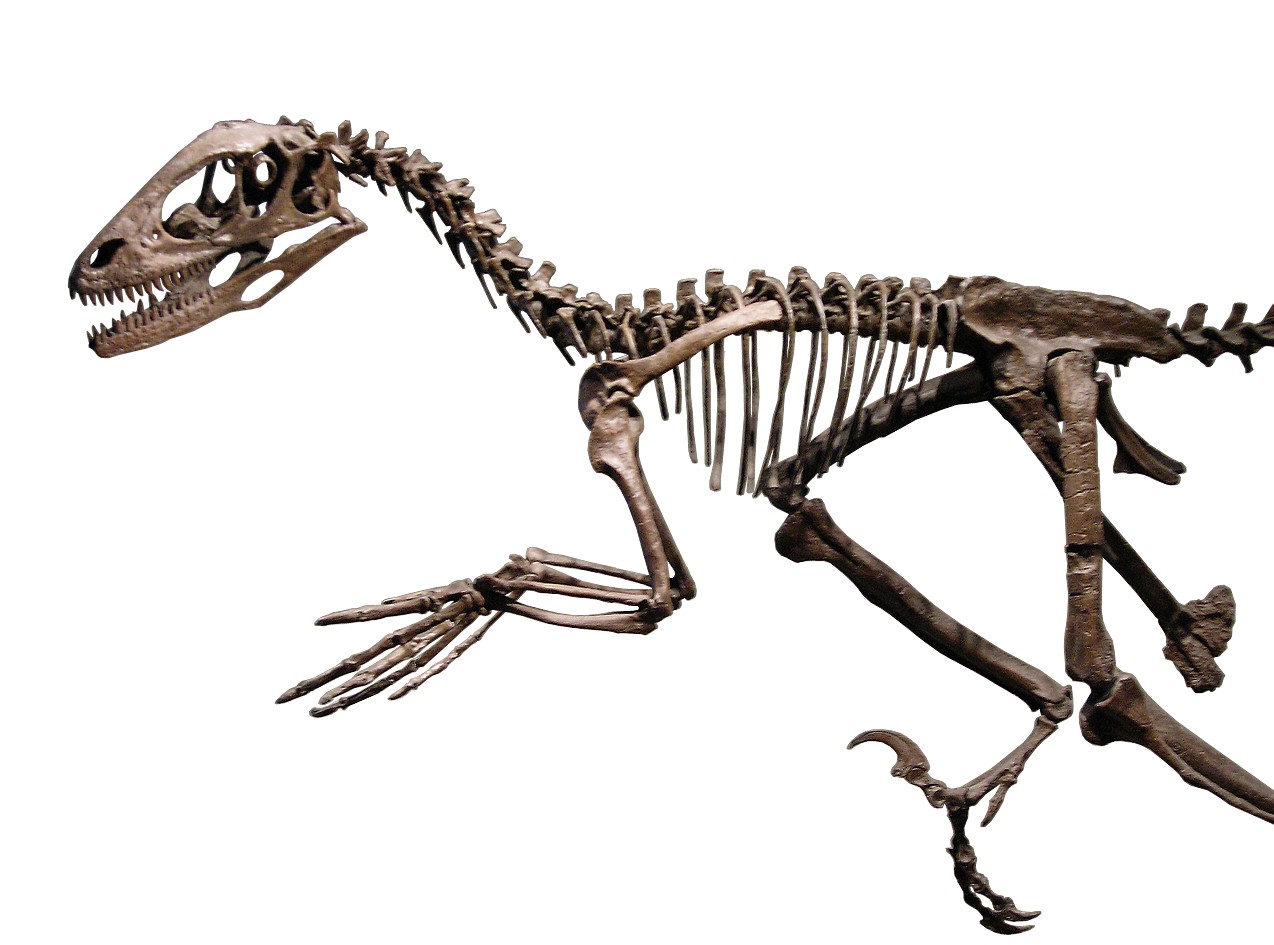Denver Fowler and his colleagues from Montana State University and from Brown University have some new theories about the habits of a group of theropod dinosaurs called Deinonychus. Their ideas, which form the basis of their ‘Raptor Prey Restraint (RPR)’ model, have implications not only for the behavior of these meat-eating dinosaurs, but possibly for the evolution of flight as well.
Skeleton of Deinonychus at the Field Museum in Chicago.
You may be familiar with Deinonychus’s cousin, Velociraptor from the Jurassic Park movies. These are smallish dinosaurs with giant claws on their second toes. In popular mythology, the claws are used to slash prey. However, Fowler and his team compared the feet of Deinonychus to those of living raptors (hawks and eagles). These birds also have large talons, but they use them to immobilize their prey, not to disembowel their victims. In the same way, the paleontologists propose that Deinonychus used its claws to grip large prey, which could then be eaten alive.
Further study of living birds of prey shows that they will sometimes flap their wings while gripping prey that is too large to carry off. They do so in order to stabilize their position on top of their struggling quarry. Although Deinonychus would have been incapable of flight, its stubby wings would have been more than up to the job of helping it maintain its balance while subduing its dinner. In other words, flapping as a means to stabilize position while feeding could have preceded powered flight.
You can see an example of this sort of behavior displayed by an Eurasian Sparrowhawk below. Note: if you're sensitive about watching animals eat each other, you may want to skip this.
By the way, how cool is it that a person who studies bird evolution is named 'Fowler'?

No comments:
Post a Comment